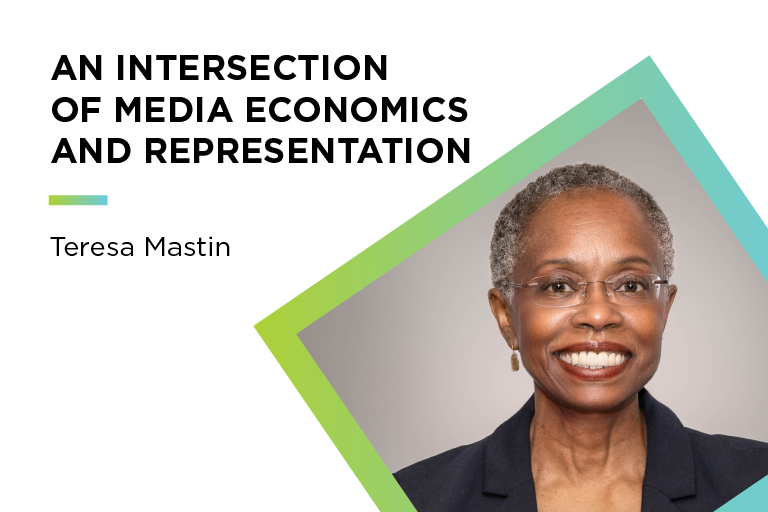Teresa Mastin, Interim Dean of the College of Communication Arts and Sciences, remembers well the day she learned the truth about magazine marketing.
It was 1995. Mastin was a Ph.D. student studying media economics at ComArtSci. That year, she came across a report stating that for the first time, more Black women had died from lung cancer than breast cancer.
Mastin dug into the archives of Essence, the nation’s premier Black women’s magazine, to see how the venerable publication tackled the topic.
She came up empty. Not one article on lung cancer over the past 25 years.
What Mastin did find was that the bulk of the magazine’s ads were for tobacco, alcohol and hair products. Hoping to make a meaningful contribution, she reached out to Essence to suggest that its readership could not rely on the magazine for all its health information.
“So, being really naïve, I reached out to Essence and said ‘hey, we should do this,’” Mastin says. “Well, they didn’t take it the way I meant and they basically said, ‘our advertising content and our editorial content are completely separate…and if you continue this line of research, we’ll have our attorney contact you.’”
The lesson? “Magazines were really for the advertisers, not for the people who are looking at (them),” says Mastin.
Mastin pressed on. She penned her research on advertising and editorial content at Essence. Howard University picked up her paper and published it in 1996.
Coming full circle
Fast forward nearly 30 years. Essence was preparing to launch a documentary on OWN in celebration of its 50th anniversary. Somewhere, a producer knew of Teresa Mastin’s 1996 paper. By then, Mastin had risen to chair the MSU Department of Advertising and Public Relations.
That’s when her phone rang.
“I’m not sure how he found me,” Mastin recalls. “He said, ‘you need to be the academic voice for this project.’”
Mastin was interviewed for the series, “Time of Essence,” which was released earlier this year. The dawn of the 21st century found Essence in transition. The hip hop revolutions was in full swing…but Essence was slow to embrace the new zeitgeist, and it paid a heavy price as younger readers fell away.
Enter Time, Inc. In 2000, the corporation purchased 49 percent of the company’s shares. By 2005, Time, Inc. owned all of Essence Communications.
The voice of female Black America was now controlled by a white man.
“African American women; Black women…they had a lot of discretionary money to spend, and Time magazine was interested in just another wealthy audience that they wanted that money from,” Mastin explains in the documentary.
“It was really traumatic,” she continues. “It was traumatic in the Black community, it was traumatic for Black women, mostly in thinking, “they don’t understand us, they don’t respect us, they don’t know us.”
A case study for today
Now, as ComArtSci interim dean, Teresa Mastin views her encounter with Essence as a potential case study for her college.
“I think it’s important that we know how communication works, and that we know how incredibly powerful it is,” she says. “I was saying to them, your voice is really powerful. So, if a product is in here, we’re thinking this is really all about us. The information that you’re not providing is critical, and if you really care about us, you would be providing that information. So, I’m simply saying, let people know how magazine economics work.”
By Kevin Lavery
